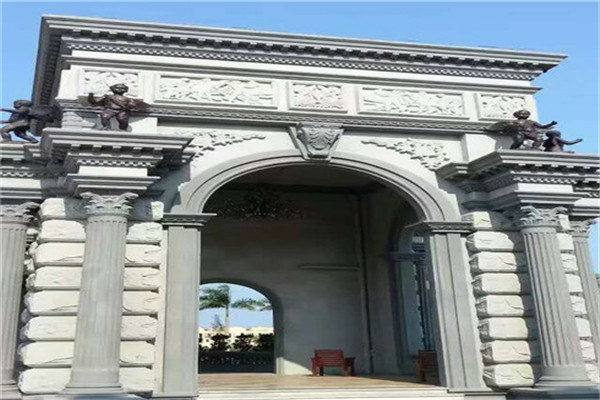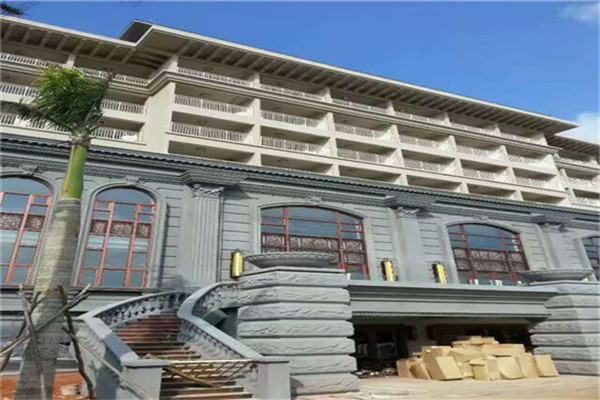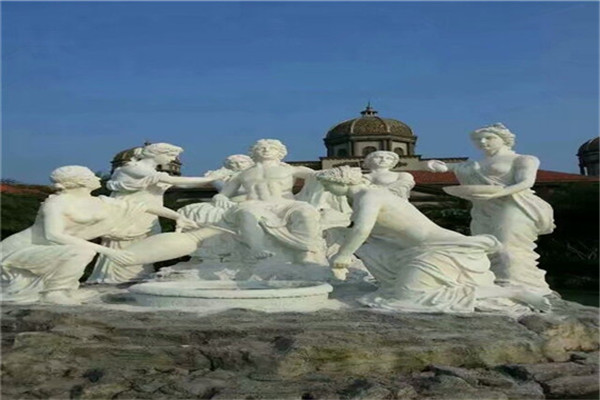
Among Chinese stone animal carvings, stone lion carvings have a unique style and can be produced in countless quantities. They are widely used for decoration, such as the stone lion carvings on both sides of the gates of imperial palaces, houses, government offices, temple shaped tombs, modern large-scale commercial buildings, hotels and restaurants, and the stone lion decorative carvings on bridges, monuments and workshops. The body shape of stone lions varies in various ways, such as standing, squatting, lying, and so on, with various shapes and often regional differences. The stone lions are carved from a wide range of materials, mostly sandstone, marble and granite. There are many kinds of stone carvings, such as cliff paintings, natural colored stone paintings, inlaid stone murals and stone screen carvings; Stone carvings of famous inkstones such as Duanxiyu, Lu, Taohe, Songhua, Temple of Heaven (or Pangu) and Helan; Paperweights, stationery stone carvings; Tea sets, wine sets, smoke stone sets, lamps and lanterns, table, chair, stool, tea table and other daily necessities, such as craft stone carvings, which are large in number and well made; Inkstone carvings and other unique styles have become a wonderful flower of Chinese stone culture: inlaid stone murals are a new masterpiece of contemporary stone carving art. The colorful stone landscape carvings in the hall on the first floor of the Central Television Tower, completed by Nu Skin, are magnificent and amazing.

Root carving is to create artistic works of characters, animals, utensils and other artistic images through conception, artistic processing and process, taking the autogenetic form and distorted form of tree roots (including tree bodies, nodules, bamboo roots, etc.) as the object of artistic creation. Root carving art is a kind of plastic art that discovers natural beauty and shows creative processing. The so-called "three parts of labor, seven parts of nature" means that in the creation of root carving, most of the natural forms of root materials should be used to express artistic images, and a few of them should be artificially processed and modified. Therefore, root carving is also called "root art" or "root art". The basic technique of root carving is to use exaggeration, fantasy and abstraction to reflect real life. To be specific, it is to make a comprehensive and careful observation of the selected root material and make a clever idea. By virtue of its shape, texture, knots, concavity and convexity, curvature, holes, and so on, it is a bold idea to combine the virtual with the real. The line seeks the usable value of the material itself with a variety of themes and contents, and is good at finding the extraordinary from the ordinary, and gradually determines the overall image of the creation. It is very important to make clear the creative idea and imagine boldly for the root generation creation.

First of all, make the structural layer of the steel bar mountain mesh on the stone wall. According to the Hainan sculpture stone structure, the density of the steel bar is about 30 to 50 cm. Then, bind and weld the steel bar on the exposed steel bar head. Pay attention to the need to shape the approximate shape. After the steel bar is welded, tie a layer of steel wire mesh outside, and then start painting. The first painting is to make a base. For the second painting and shaping, it is necessary to make some rock texture, such as concave and convex, wrinkles, because the above steps must be grasped, and craftsmen must make the surface very artistic! Must have basic skills of modeling and stone molding. high quality GRC Building It is effective to spray stone like paint. Before large-area spraying, small samples were tested to show speckled particles in natural stone. Fill the gaps in the stone wall with earth and then plant them. Maybe fill some ceramic bottles and jars that are harmonious with the theme materials. There are still some water sources in the pottery to supplement its spatial diversity. There is also a new type of plastic stone, which is made of light materials such as environment-friendly building raw materials, fine resins, efficient reinforcing agents, pro aggregate, imported pigments, etc., by mixing, processing, and molding, and then steaming and curing at high temperature. GRC Building manufactor Each product has different shapes and various combinations, which are no different from real stones in texture, color and texture.

Auxiliary tools for wood carving: mainly hammer, wood file, axe and saw. The purpose of the axe is to cut a large amount of wood with the help of paring. Pay attention not to use too much force when cutting. Do not cut straight up and down. The edge of the axe should be kept at about 45 degrees with the vertical wood grain, otherwise the wood will crack. Hainan GRC component wood file is mainly used in the fine blank stage of round carving, which can replace the flat knife to smooth the chisel marks for polishing; It can also take the place of round knife or oblique knife for hollowing. The function of the wood file is also that it can quickly adjust the modeling structure in a large area, and can be used in combination with the carving knife to make the turning and turning of the figure's clothing patterns vivid and smooth, with both virtual and real effects. The shape of hammers for wooden sculptures in Hainan is flat, flat, wide and square. The dimension of hammer face can be controlled at about 7 × 5.5 × 2.5 cm. Too narrow or too thick will affect the accuracy of the hammer's landing point and the uniformity of force. There are two kinds of hammers: wooden hammers and iron hammers. The wooden hammers generally use hardwoods with a large proportion of wood, such as mahogany, boxwood, sandalwood, beech and fruit trees. The specifications can be controlled at 27 cm in length, 55 cm in width and 45 cm in thickness; The grip is round and slightly flat, and the size is suitable for holding in the hand.

Lacquer carving is a traditional handicraft in China, also called red carving. Its technique began in the Tang Dynasty, and its process is extremely complex. Paint, tire The process of polishing and polishing is complicated and takes a long time, so large lacquer carvings are also extremely expensive and have always been the furnishings of royal families and nobles in ancient times. Lacquer carving is a technique to carve patterns on stacked flat lacquer bodies. It was introduced into Beijing during the Yuan and Ming Dynasties. Through the painstaking research of lacquer carving artists, the lacquer carving technique has gradually become perfect and mature, and lacquerware has become a handicraft with Beijing characteristics. Beijing lacquer carving is as famous as Hunan Hunan embroidery and Jiangxi Jingdezhen porcelain. It has been known as the "Three Masters of Chinese Arts and Crafts". For many years, lacquer carving has been favored by lacquer carving art lovers at home and abroad for its unique craft, exquisite and beautiful shape without losing a sense of solemnity.

Exterior wall decorative panel is a new type of integrated material for building exterior wall decoration and insulation developed in recent years, which is composed of polyester baking paint or fluorocarbon paint, carved aluminum zinc alloy steel plate, polyurethane insulation layer and glass fiber cloth; It is mainly used for exterior wall decoration and energy-saving reconstruction of gymnasiums, libraries, school and hospital office buildings, villas and other buildings; The main functions are building decoration, heat preservation, energy conservation, heat insulation, sound insulation, waterproof and mildew proof. The metal surface decorative insulation board is a large external hanging wall board produced in industrialization. It has good durability and low maintenance cost due to dry installation construction. It integrates the external wall insulation and decoration functions, conforms to the development direction of building energy conservation "modularization" technology, and is an advanced technology vigorously promoted in the field of external temperature protection technology of building walls in China.






